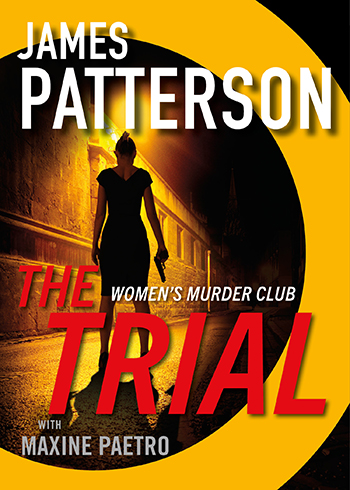Staying Fit


There aren’t many authors who can say they have sold 100 million books.
In fact, there’s only one.
In April 2023, thriller extraordinaire James Patterson, 76, became the first author to sell more than 100 million books, according to Publishers Weekly. What’s more, if you also count ebooks and audiobooks, Patterson is estimated to have sold more than 400 million copies, making him the best-selling author of all time. In collaboration with Patterson, AARP is offering the chance for members to read his novella The Trial free on Members Only Access. The Trial is one of the 23 books (and counting) that are part of the Women’s Murder Club, Patterson’s most popular series.


AARP Membership— $12 for your first year when you sign up for Automatic Renewal
Get instant access to members-only products and hundreds of discounts, a free second membership, and a subscription to AARP the Magazine.
The books in the Women’s Murder Club series are numbered chronologically — 1st To Die, 2nd Chance, 3rd Degree, etc. The series also includes a few shorter, single-sitting reads, like The Trial, which is considered Book Number 15.5. It’s sandwiched between 15th Affair and 16th Seduction.


Women’s Murder Club centers around the friendships among four accomplished women: Lindsay Boxer, a San Francisco Police Department homicide detective; Dr. Claire Washburn, chief medical examiner for San Francisco; Yuki Castellano, a San Francisco district attorney; and Cindy Thomas, a crime desk reporter for the San Francisco Chronicle. “The four of them get together and will occasionally work on or help one another on a case,” Patterson tells AARP. He adds that the 24th Women’s Murder Club book has been completed and the 25th book is nearly done.
“I like the series, and every once in a while, I’ll write a shorter one like The Trial,” Patterson says. “I’m probably going to write another shorter one next year. The hope is if people aren’t familiar with the series, they’ll go, ‘Oh, I like those characters. I’d like to know more about those characters.’”
Although Patterson is well known for male protagonists — like Alex Cross, the Washington, D.C., homicide detective who entered the zeitgeist back in 1993 with the novel Along Came a Spider; and Michael Bennett, the Irish American New York City detective who solves crimes as he raises his family — writing women as main characters came easily to him.
“I grew up in a house full of women — a mother, grandmother, three sisters, two female cats — and the buzz and purr is still in my head, and it really has affected me,” he says. “The dialogue, the whole thing. … I don’t believe that you have to be a woman to write about a woman, and you don’t have to be a man to write about a man. I’ve never bought into that. There’s so much art that you’d have to throw out if you wanted to go that way.”


































































More From AARP
Free Books for Your Reading Pleasure
Gripping mysteries and other novels by popular authors available in their entirety online for AARP members